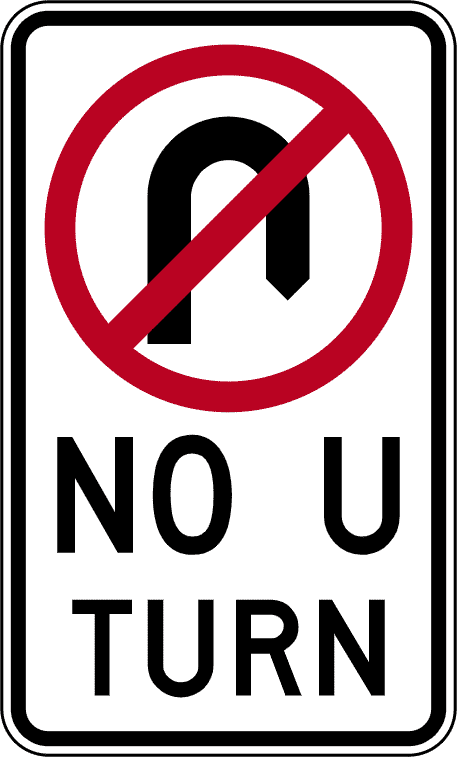Understanding U-Turn Rules In NSW
Performing a U-turn in New South Wales requires understanding specific road rules and restrictions to ensure safety and compliance. In this guide, we’ll cover the essentials for U-turns, including the regulations at traffic lights, road markings that make U-turns illegal, and best practices for safe driving. By following these rules, drivers can navigate U-turns responsibly and avoid penalties.
Where U-Turns Are Not Allowed in NSW
In NSW, there are certain areas and situations where U-turns are prohibited. Knowing these restrictions helps ensure safe and lawful driving. U-turns are not allowed in the following situations:
- Intersections with “NO U-TURN” Signs
U-turns are prohibited at any intersection displaying a “NO U-TURN” sign. - Divided Motorways
U-turns are not allowed on divided motorways. - Across Unbroken Centre Lines
It’s illegal to make a U-turn across single or double unbroken centre lines. U-turns are only permitted if the line closest to you is broken. - At Traffic Lights without a “U-TURN PERMITTED” Sign
U-turns at traffic lights are only allowed when a “U-TURN PERMITTED” sign is visible. Otherwise, performing a U-turn is prohibited at intersections with traffic lights.

Legal U-Turns and Road Markings
To make a legal U-turn in NSW, check for clear road markings and follow these key guidelines:
- Permitted Road Markings
U-turns are allowed when there are broken dividing lines next to your vehicle. If there’s an unbroken line closest to you, U-turns are illegal. - Lane Positioning
On multi-lane roads, make the U-turn from the lane nearest the centre of the road, or the marked lane if provided. This lane positioning is crucial to avoid obstructing traffic.
These road markings and lane requirements ensure U-turns are made only in safe, appropriate areas.
Tips for Safe U-Turns
Executing a safe U-turn requires careful planning and attention. Here are some best practices:
- Plan Ahead
Confirm the road is clear, and you have sufficient space to complete the U-turn safely. - Check Your Mirrors and Blind Spots
Before turning, check all mirrors and blind spots to avoid unexpected vehicles in your path. - Avoid Sudden Moves
Position yourself correctly in the lane nearest the centre of the road, and make smooth, controlled movements as you turn.
Mastering Safe Driving with the Safer Drivers Course
For learner drivers in NSW, LTrent Driving School offers the Safer Drivers Course to build confidence and road skills. This course includes essential knowledge and practical sessions to help you navigate real-world scenarios, like U-turns, safely. Completing the course not only provides 20 logbook hours but also prepares you for complex manoeuvres, improving overall driving safety.
Contact LTrent Driving School today to book a lesson or learn more about our comprehensive driving programs. Our expert instructors are here to help you drive confidently and responsibly in NSW.
FAQS
Can You Do a U-Turn at Traffic Lights in NSW?
Making a U-turn at traffic lights in NSW is only allowed when a “U-TURN PERMITTED” sign is displayed at the intersection.
Which Road Markings Make a U-Turn Illegal in NSW?
Understanding road markings is essential when it comes to making legal U-turns in NSW. Here are some key markings to watch for:
- Single or Double Unbroken Dividing Lines: U-turns are strictly prohibited when there’s a single or double unbroken dividing line in the centre of the road. These road markings signal a no-cross zone for safety reasons.
- Lines with an Unbroken Line Closest to You: Even if there’s a broken line next to an unbroken line, U-turns are illegal if the unbroken line is closest to your vehicle.
- Dividing Lines in Restricted Areas: In areas where divided lines indicate restricted access, such as near intersections or roundabouts, U-turns are also not permitted.
By paying close attention to these road markings, you can determine whether it’s legal to perform a U-turn at a given location.